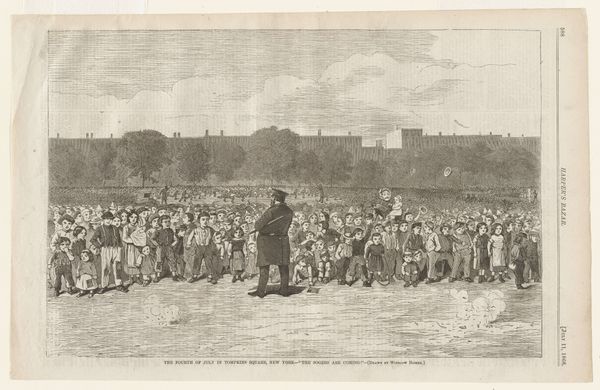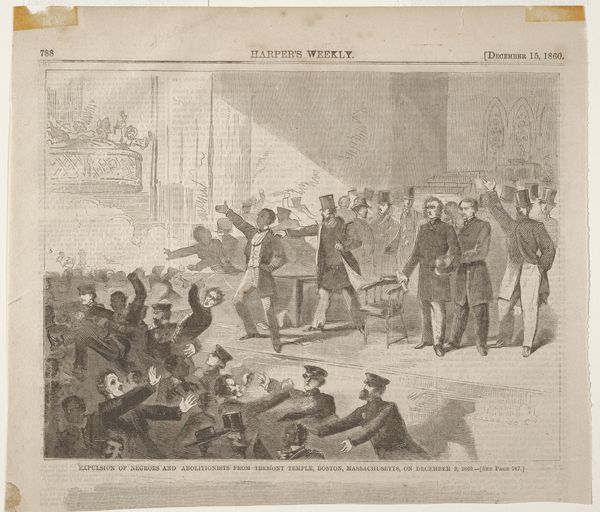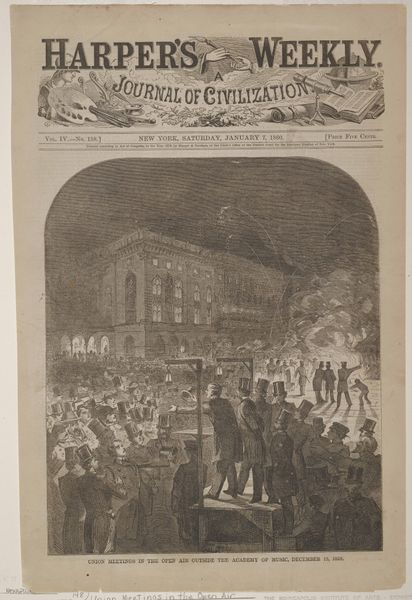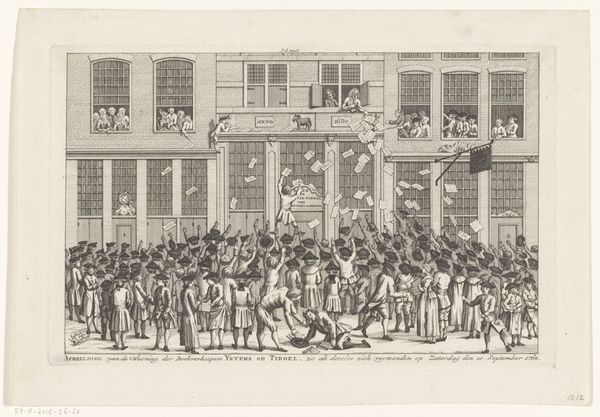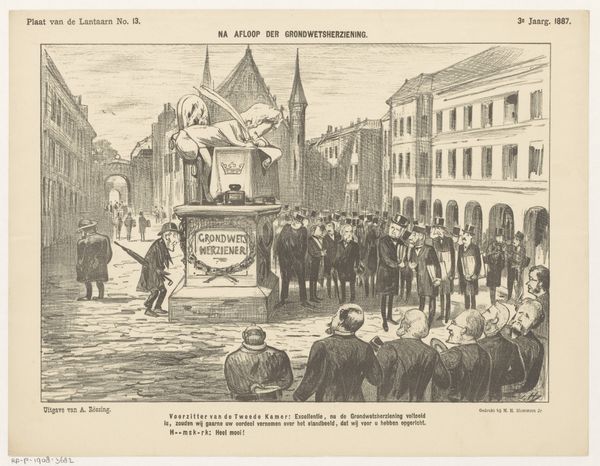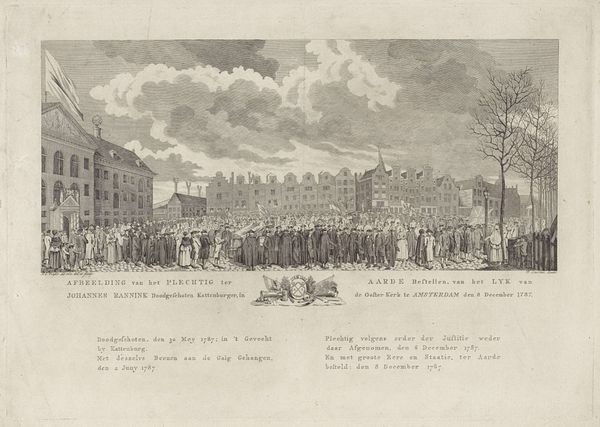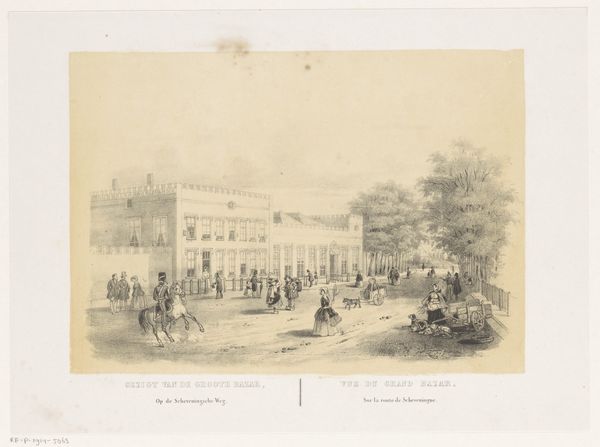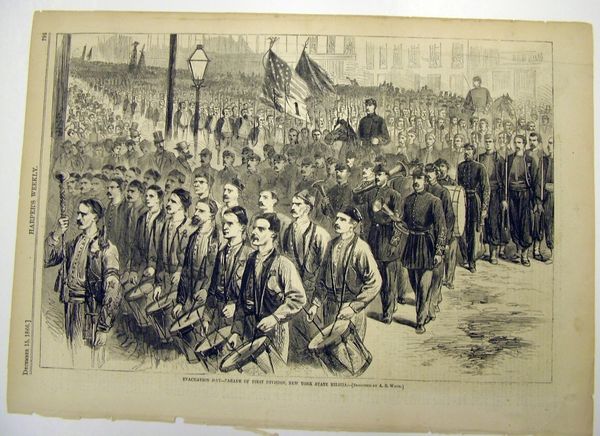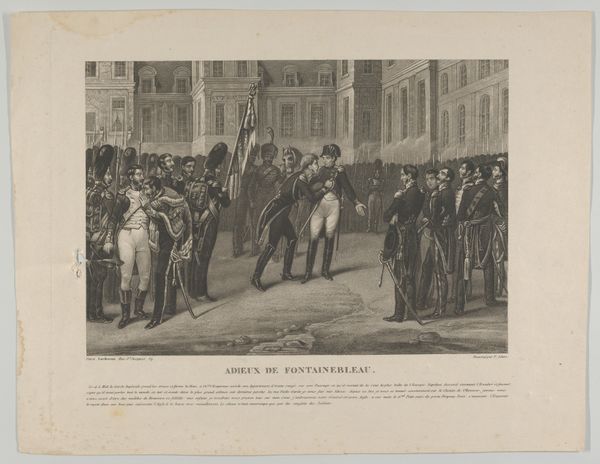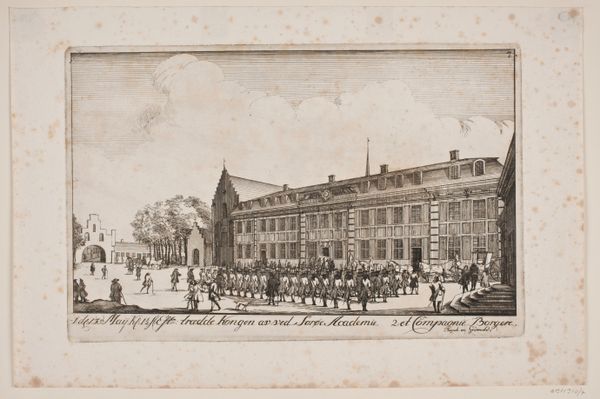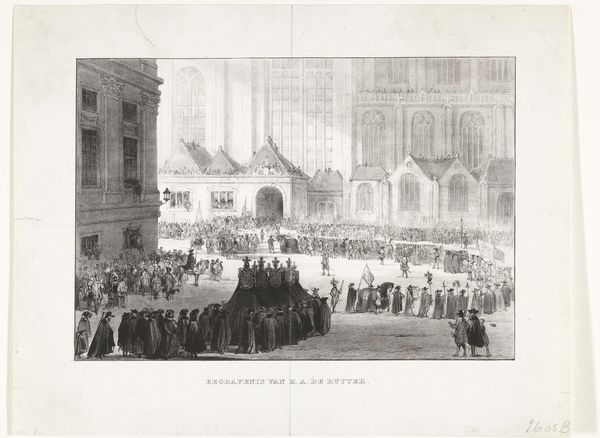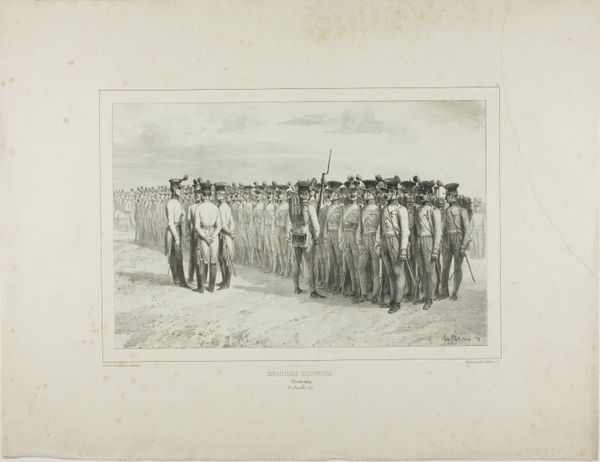
print, engraving
#
ink paper printed
# print
#
cityscape
#
genre-painting
#
engraving
Dimensions: height 360 mm, width 565 mm
Copyright: Rijks Museum: Open Domain
Curator: The work before us, "Optocht van boekhandelaren te Hamburg," or "Parade of Booksellers in Hamburg," is an engraving by Joseph Puschkin, created sometime after 1859. It’s printed on paper with ink. It's quite detailed, though faded with age. What strikes you first? Editor: My first impression is that it looks like a very orderly, yet also rather bleak affair. So many men, uniformly dressed, and lined up as if awaiting inspection rather than celebrating literature. It feels strangely regimented, like a precursor to a somber black and white photograph. Curator: That's a powerful observation. The uniform dress undeniably contributes to a sense of order, even conformity, that speaks to the social conventions of the time. But look closer, the arrangement carries significance. Consider the deliberate placement of the figures; the booksellers represent a cornerstone of civic society, positioned against the backdrop of Hamburg's cityscape. They embody both progress and cultural continuity. Editor: True, their positioning grants them a certain gravity, a deliberate presence in the urban landscape. And one wonders about the event commemorated. Is this about solidarity or perhaps a show of economic strength amidst socio-political changes? The choice of portraying them in this rigid formation feels deliberate, even if it seems austere to us today. Who were these men and what were their social standings? Curator: The booksellers represented a network that disseminated information and shaped public opinion. In the context of mid-19th-century Hamburg, a major port city, the free flow of ideas would have been integral to its intellectual vitality and commercial success. I think the engraver is alluding to their important societal function through visual means of permanence and solemnity. Editor: I’m intrigued by the role of genre painting and its potential for reflecting and shaping social structures, it's not always just a straightforward illustration of life but often serves a specific ideological purpose. Curator: I agree. Considering the details, we're prompted to decode the layered meaning embedded within this formal depiction of seemingly ordinary men. Editor: Seeing how our modern perception can still connect with such older imagery underscores the enduring dialogue between art and social commentary.
Comments
No comments
Be the first to comment and join the conversation on the ultimate creative platform.
